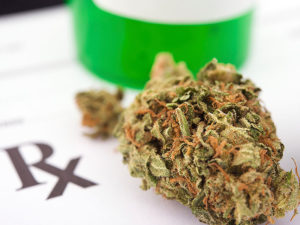Medical marijuana has generated excitement in all corners of the medical community, from doctors and patients alike. It’s now legal for medical purposes in 29 states, and the State of Florida’s Medical Cannabis Program approves its use for variety of conditions, including cancer, multiple sclerosis and Parkinson’s disease.
The strongest scientific evidence so far is that marijuana can be used to treat chronic pain stemming from these conditions and other injuries, which could provide a safer alternative to opioid painkillers. But highly publicized laws in other states have stirred a grassroots push by families of children with severe forms of epilepsy like Dravet syndrome and Lennox-Gastaut syndrome to use cannabidiol oil and other compounds extracted from cannabis to treat seizures as well.
The anecdotal evidence that these compounds can treat epilepsy is promising, but the scientific data is still thin on medical marijuana Doctors in Florida. The University is currently participating in four clinical trials using such compounds for children with epilepsy, including a synthetic form of cannabidiol, to learn more about their safety and effectiveness.
We’re using synthetic cannabidiol, which just means it was created in a lab as opposed to being extracted from the plant. It has exactly the same properties as the natural product. It’s a liquid, so it’s mixed in right now with oil administered orally twice a day.

Does cannabidiol have the same side effects as marijuana?
Most of the side effects we think about in Florida Medical marijuana are from THC. THC produces the high, it produces the hunger and it produces the sedation. Cannabidiol doesn’t have any euphoric properties to it. It tends to have mild stimulant effects, and it doesn’t have any appetite effects. There are very few other side effects to suggest significant downsides to the medicine to date, but that’s in a very small data set so far.

How does it work to help patients with epilepsy?
That’s the million-dollar question right now. All the data we have is from some animal work and one clinical trial in the 80s. There’s also a competing set of trials with 137 patients using a natural product that appears to be effective, about a 50 percent reduction of seizures in 50 percent of the patients. However, if we look at the most recent sets of double blind, placebo-controlled trials in the last 5 years, placebo rates were approaching 40 percent. So it’s hard to know what a 50 percent response rate is when you have 40 percent placebo response in other trials. So that’s why I say we don’t know whether it works or not.
Do you think it still has promise? This seems like a case where the hype has gotten ahead of the science.
That’s exactly correct, and it’s always a problem. That’s why we have clinical trials first. From my perspective I still think it’s important that patients work with physicians before they try it on their own, because you don’t want them making mistakes with their other drugs.